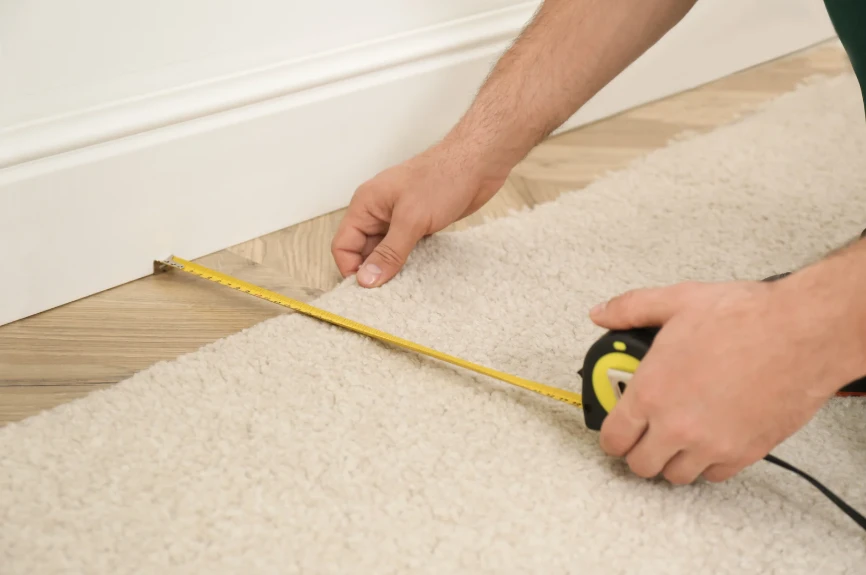You don’t really think about carpet until you’re standing in the middle of a stripped-down room, staring at bare floorboards, and wondering how to make your space feel warm again. That was me a few months back — coffee in hand, measuring tape out, trying to guess whether the hallway needed a join or not. Turns out, I was wrong.
That’s where the pros come in. Carpet laying might seem like a simple task, but proper carpet installation involves far more than unrolling a roll and smoothing out a few lumps. The way a carpet is measured, cut, stretched, and secured can affect its lifespan, appearance, and even how safe it feels underfoot. And that’s before we even talk about seams, underlay, or prepping your subfloor.
So if you’re thinking about hiring local carpet layers — or just want to avoid the same mistakes I made — here’s everything I wish I’d known ahead of time.
What a carpet layer actually takes care of
There’s more to the job than most people realise. It’s not just rolling out a few metres of carpet and hoping for the best. I used to think that, too — until I watched a professional at work and noticed how much prep happens before the first cut is even made.
A solid installer isn’t just laying floor coverings — they’re solving problems before they appear. Every curve in a skirting board, every odd nook behind a door, all need to be accounted for.
Here’s what the process usually includes:
- Inspecting and preparing the subfloor (especially removing glue or staples)
- Cutting the carpet to fit corners, recesses, and door frames
- Stretching the carpet taut to avoid wrinkles
- Tucking and finishing edges for a seamless look
- Installing trims or transitions between floor types
If I had to do it over, I’d ask more questions upfront. Good installers don’t just deliver a flat surface — they make the whole floor feel cohesive.
Safety and flooring go hand in hand
Something that often gets overlooked — especially in homes with kids or elderly family members — is how the choice of flooring affects household safety.
A lot of falls happen on surfaces that are smooth but not designed to be secure. That’s why materials like carpet, when installed correctly, can be a good preventative measure. As outlined by SafeWork NSW, slip-resistant flooring is a key consideration in preventing same-level falls and maintaining a safe environment across high-traffic areas.
Carpet can absorb shock, reduce slipping risks, and act as a barrier for sudden impacts. But if it’s installed loosely or over poor-quality underlay, it can create hazards of its own — like folds, raised edges, or shifting underfoot. This is where professional workmanship really counts.
A small wobble in the floor might not seem like much, but trust me, once you notice it, you’ll never stop stepping around it.
Why installation methods actually matter
Not all carpet installations follow the same technique, and the method chosen can influence how the flooring performs over time.
For example, I once had a small office room done using the direct-stick method. It worked well in that space, but in another room with timber floors and heavy furniture, it didn’t hold up as expected. Understanding the available carpet installation methods helps you ask better questions when you’re getting quotes.
Some common approaches include:
- Stretch-in installation – Common for residential spaces, offers comfort and insulation
- Direct glue-down – Best for high-traffic or commercial areas
- Double glue-down – Combines comfort with stability, often used in hospitality
- Carpet tiles – Modular and easy to replace, ideal for DIY adjustments
Installers may have their preferences, but your needs matter too. Whether you’re renting, renovating, or staying put long-term, it helps to think beyond aesthetics. Every method affects feel, fit, and flexibility.
What defines a trustworthy tradesperson
One thing I didn’t expect when hiring a carpet layer? The range of approaches to communication.
Some installers were happy to explain each detail; others barely returned my calls. That alone was a red flag.
When comparing reliable carpet installers, it’s worth looking beyond just their availability or cost. What matters most is how transparent they are with timelines, materials, and potential challenges. You can usually get a feel for this during the quote process.
Here are a few things to consider:
- Are they measuring the entire space themselves, or asking you for dimensions?
- Do they explain why they’re recommending a particular method or underlay?
- Can they share examples of previous work — ideally similar to your space?
- How do they handle tight corners, staircases, or oddly shaped rooms?
More often than not, the most capable professionals are also the ones who don’t mind being asked why they do things a certain way.

Final thoughts on hiring the right team
Hiring carpet layers isn’t just about finding someone who can finish the job quickly — it’s about trust. You’re letting them into your space, relying on their judgment, and hoping the finished product looks the way you imagined it.
From what I’ve seen, the best results come from asking the small questions early on. Things like: What’s under the existing flooring? Will you be trimming under doors or removing skirting boards? How long will it take to settle?
I once had an installer who told me, “If it’s not quiet when you walk on it, we haven’t done it right.” That stuck with me.
Details matter not just for durability, but for peace of mind. And when you know the job's been done right, you don’t think about it every time you walk into the room. You just feel it.


